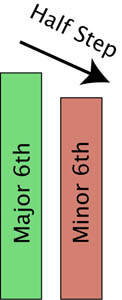Minor Thirds
Minor Thirds
A Minor 3rd is one half step lower than a Major Third. By themselves, Minor 3rds tend to have a sad sound. They are often written as "b3" which we pronounce "Flat 3".
A Minor 3rd is equal to a whole step + a half step. It is also equal to 3 semitones.

Major Seconds
Major Seconds
A Major 2nd is equivalent to two semitones.
It is the distance from the first note to the the second note in the major scale.
Major 2nds by themselves tend to have a fairly neutral sound.
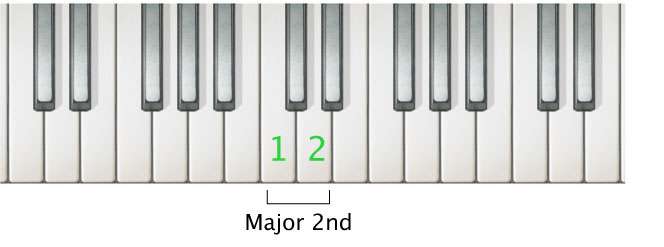
You're Finished!
Click one of the links below to take a lesson
Using The Interactive Lessons
1 2 3 4 5 6 7 8 9 Using the Interactive Lessons Thanks for visiting UltraMusician.com. We’re glad you could make it. UltraMusician.com is the most powerful site on the web for learning music. What makes it so powerful…
Minor Seconds
Minor 2nds
An Interval is a measurement of the musical distance between two notes. Intervals can be thought of as musical inches.


A Minor 2nd is the smallest interval in our musical system.
It is the distance from one note to the nearest neighboring note.
Minor 2nds also go by the following names:
- Half Step
- Semitone
- Flat 2 (written "b2")
On the piano it is the distance from one key to it's nearest neighbor, regardless of whether the neighbor is a white key or a black key.

On the guitar it is the distance from one fret to the next adjacent fret, or a fret which produces the same sound.
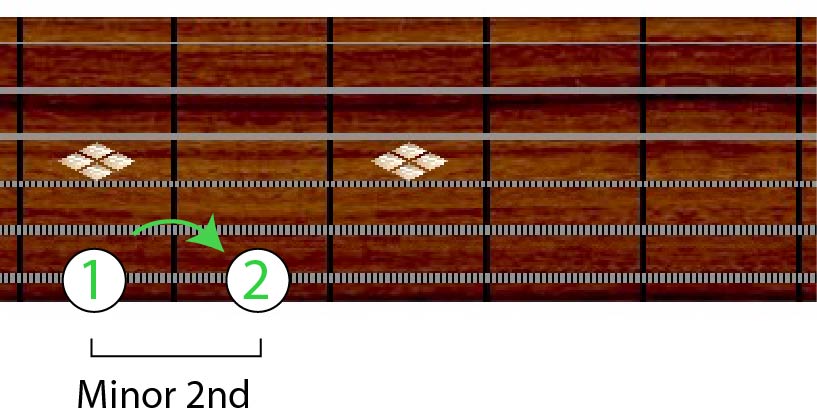

You're Finished!
profile_instrument;
$instruments = array($instrument);
$caption = "";
$links = array("Take a Lesson");
if(!isset($instrument)){
//If the instrument is not set, then we will provide links for all three instruments.
$caption = "Click one of the links below to take a lesson.";
$links = array("Piano", "Guitar", "Bass");
$instruments = array("piano", "guitar", "bass");
}
echo $caption . "
";
for($i = 0; $i < count($instruments); $i++){
$link = $links[$i];
$instrument = $instruments[$i];
echo "$link
";
}
?>
profile_instrument; $instruments = array($instrument); $caption = ""; $links = array("Take a Lesson"); if(!isset($instrument)){ //If the instrument is not set, then we will provide links for all three instruments. $caption = "Click one of the links below to take a lesson."; $links = array("Piano", "Guitar", "Bass"); $instruments = array("piano", "guitar", "bass"); } echo $caption . "
"; for($i = 0; $i < count($instruments); $i++){ $link = $links[$i]; $instrument = $instruments[$i]; echo "$link
"; } ?>
Major Sevenths
Major Sevenths
A Major 7th is equivalent to moving up 7 degrees in the major scale, starting on the tonic.
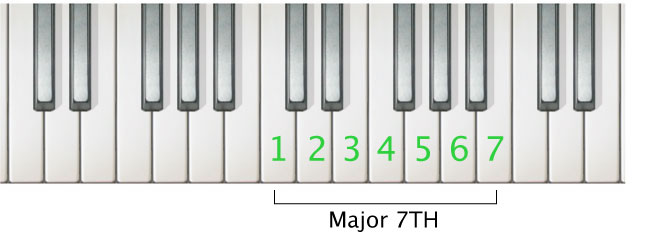
It is also equivalent to 11 semitones.
By themselves, their sound is somewhat harsh but can be quite beautiful when used as part of a chord.

Octaves
An octave is the distance from one note to the next note of the same name.
For example, from C to the next C on the keyboard would be an octave.
For example, from C to the next C on the keyboard would be an octave.
Minor Sevenths
Minor 7ths
A Minor 7th is one half step lower than a major 7th.
By themselves, Minor 7ths have a somewhat nuetral sound.
A Minor 7th is equivalent to 10 semitones.
Like other large intervals, it is recommended to anchor off of another nearby interval.
Major Sixths
Major Sixths
A Major 6th is equivalent to moving up six degrees in the major scale, starting from the tonic.
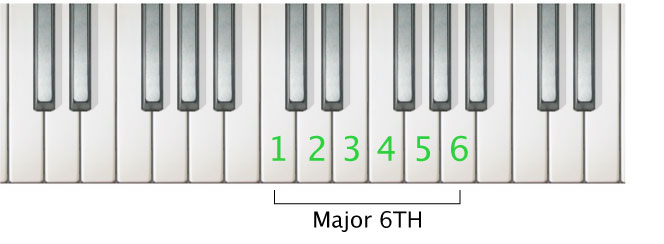
By themselves, Major 6ths tend to have a positive, hopeful sound.
Minor Sixths
Minor 6ths
A Minor 6th can be though of as a Major 6th that has been lowered by a half step.
